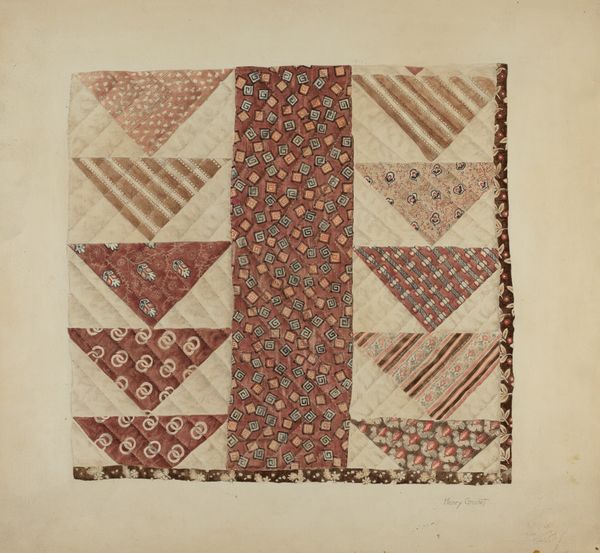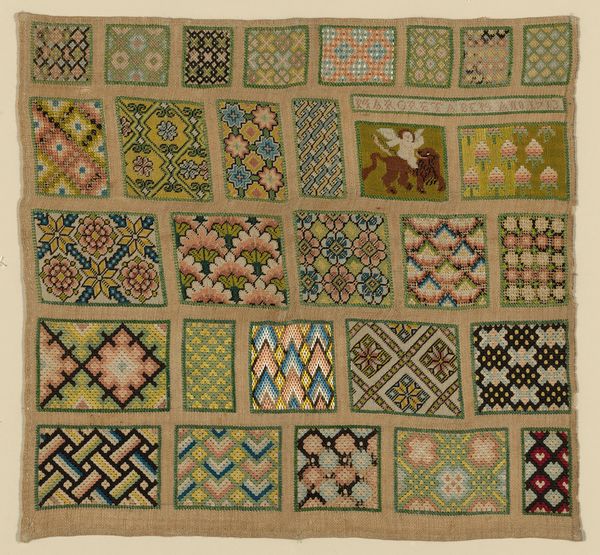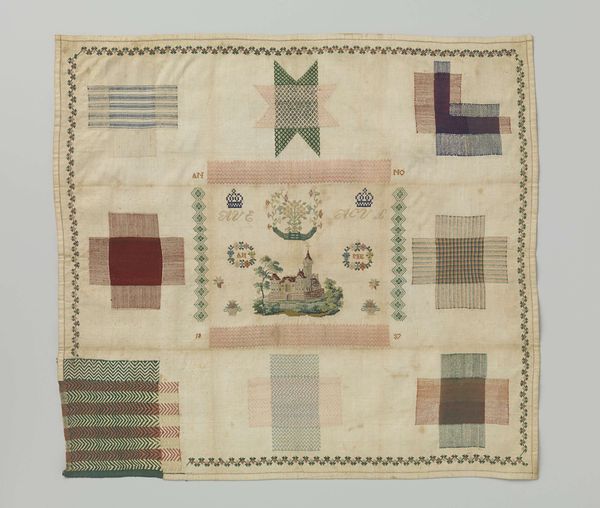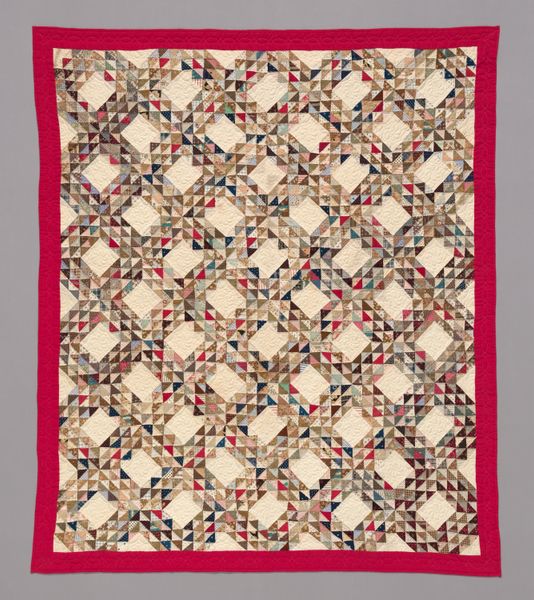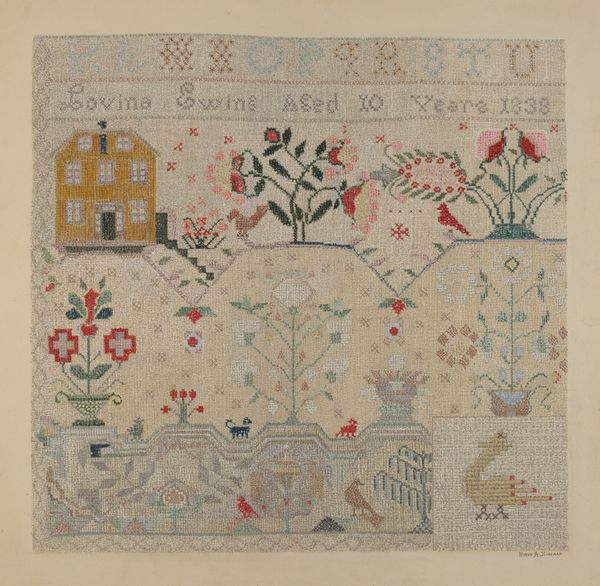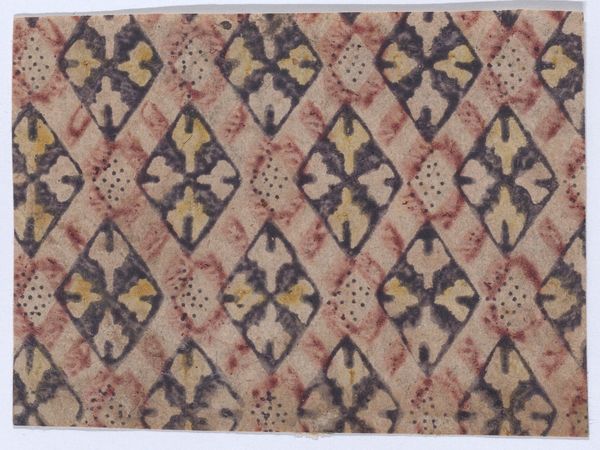
Borduurlap van linnen canvas waarop met zijde in tapisseriesteken 19 verschillende vlakversieringen zijn gemaakt en de tekst RINCK CORNELIS IN NORTKOPPEN 1706
0:00
0:00
weaving, textile
#
pattern heavy
#
natural stone pattern
#
pattern
#
weaving
#
textile
#
pattern making
#
hand-embroidered
#
pattern background
#
repetitive shape and pattern
#
repetition of pattern
#
regular pattern
#
pattern repetition
#
decorative-art
#
layered pattern
Dimensions: length 25 cm, width 23 cm
Copyright: Rijks Museum: Open Domain
This sampler was made by Cornelis Rinck in Nortkoppen with silk thread on a linen canvas, using tapestry stitches to create nineteen different patterns. Samplers such as these, made in the Netherlands and across Europe, served as a record of stitches and patterns, but also as displays of skill. Embroidery was a key part of a young woman’s education, demonstrating her ability to manage a household and create textiles. But it was also a way to show off her family’s status. The costly silk thread displayed here reflects a certain level of wealth and access. Notice the inscription; the act of signing the work indicates the individual achievement of the maker and the institutionalization of needlework as an art. Understanding the social role of such work requires us to look into archives, household accounts, and educational records. These sources help us interpret the cultural values that shaped the creation and reception of this seemingly simple object.
Comments
No comments
Be the first to comment and join the conversation on the ultimate creative platform.


